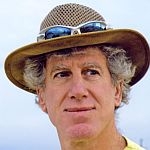 (HOST) As the region finds ways to cope with changes brought about
(HOST) As the region finds ways to cope with changes brought about
by Tropical Storm Irene, commentator Ted Levin is reminded that
sometimes, big weather events also rearrange little places.
(LEVIN)
There’s a small pond that flanks the east side of Five Corners Road,
where I live. The pond’s overflow, ushered under the road by a pair of
culverts, drains into the 60-acre marsh we call Coyote Hollow.
Over
the fifteen years that we’ve lived here, I’ve seen muskrat, beaver,
otter, mink, black bear, deer, long-tailed weasel, and coyote in the
wetland. A friend spotted a moose grazing on water lilies. Another
watched a mother bobcat teach her kittens to stalk muskrats. Eagles and
ospreys stopped by the open water; and one April, an immature little
blue heron, as white as new fallen snow, landed on a muskrat lodge and
speared hapless wood frogs.
Bitterns nest in the marsh and
sometimes feed along the rim of the pond. When the entire basin filled
with water, marsh wrens wove nests in the emergent vegetation. Sometimes
swamp sparrows and snipe make their homes here; sometimes not. It has
to do with water levels.
This past July was dry. The derelict
beaver dam at the southern end of the marsh sprung a leak; water levels
were low, very low. In fact, runoff from the pond stopped, leaving
behind a pool of stagnant water about the size of a kitchen table, the
last tangible link between the marsh and the pond. At high water, when
the pool has its own umbilicus through a stand of alders into the open,
airy marsh, fish, turtles, tadpoles, and aquatic insects travel from the
pond through the culvert into the pool and beyond. At low water, the
pool more or less congeals into bowl of loose, smelly mud.
This
summer, the pool became aquatically isolated from the pond and the
marsh, an ephemeral body of water whose edges slowly tightened around
the standing water. It was like the Everglades in the dry season writ
small. Fish were trapped in the shrinking pool.
My son, William,
who maintains a freshwater aquarium, soon discovered that the pool
offered an unparalleled opportunity to catch stuff. He’d bring home
black-faced dace, pumpkin-seed sunfish, and brown bullheads, which
proved to be all mouth and stomach.
One afternoon, late in July,
as William watched little fish dart through the shallows, trailing
plumes of sediment behind them, a long-legged, robin-sized bird with a
reddish, three-inch, sickle-shaped bill stepped out of the alders. The
bird began to catch the small fish, a task made easy by the shrinking
water.
After carefully studying our bird books, William
determined that the mysterious bird was a Virginia rail, a paper-thin
marsh bird, perfectly suited to walk through a vertical army of stems.
Although
we stopped by the culvert on many occasions, no one ever saw the rail
again. Now that Tropical Storm Irene has flushed the pool, reconnecting
it to the marsh and liberating the stranded fish, the rail must be
exploiting some other micro-habitat . . . somewhere across the eastern
face of North America.